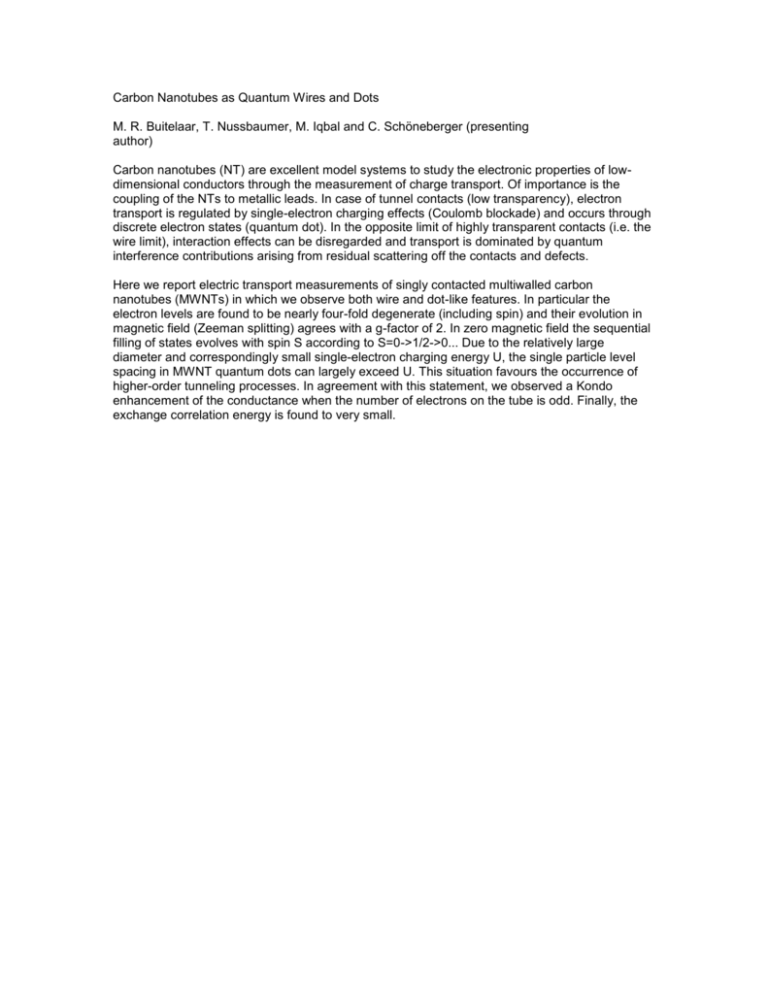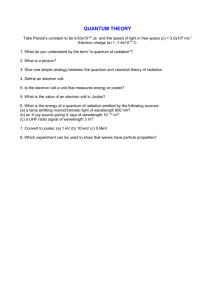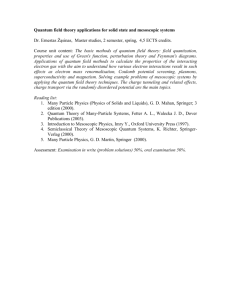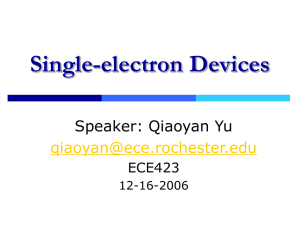Carbon Nanotubes as Quantum Wires and Dots
advertisement

Carbon Nanotubes as Quantum Wires and Dots M. R. Buitelaar, T. Nussbaumer, M. Iqbal and C. Schöneberger (presenting author) Carbon nanotubes (NT) are excellent model systems to study the electronic properties of lowdimensional conductors through the measurement of charge transport. Of importance is the coupling of the NTs to metallic leads. In case of tunnel contacts (low transparency), electron transport is regulated by single-electron charging effects (Coulomb blockade) and occurs through discrete electron states (quantum dot). In the opposite limit of highly transparent contacts (i.e. the wire limit), interaction effects can be disregarded and transport is dominated by quantum interference contributions arising from residual scattering off the contacts and defects. Here we report electric transport measurements of singly contacted multiwalled carbon nanotubes (MWNTs) in which we observe both wire and dot-like features. In particular the electron levels are found to be nearly four-fold degenerate (including spin) and their evolution in magnetic field (Zeeman splitting) agrees with a g-factor of 2. In zero magnetic field the sequential filling of states evolves with spin S according to S=0->1/2->0... Due to the relatively large diameter and correspondingly small single-electron charging energy U, the single particle level spacing in MWNT quantum dots can largely exceed U. This situation favours the occurrence of higher-order tunneling processes. In agreement with this statement, we observed a Kondo enhancement of the conductance when the number of electrons on the tube is odd. Finally, the exchange correlation energy is found to very small.











